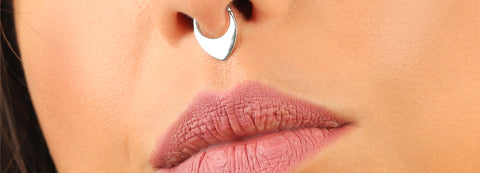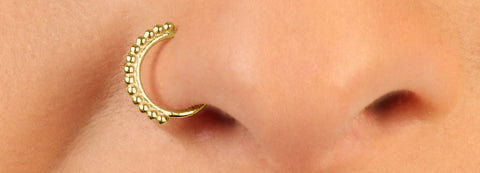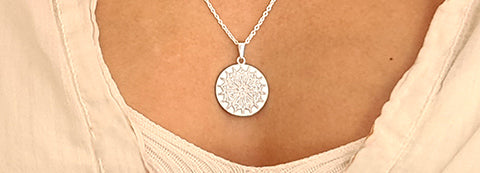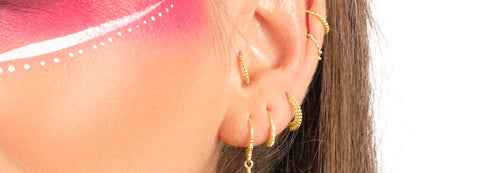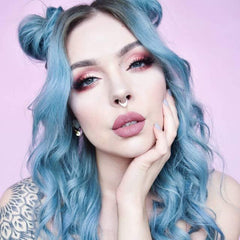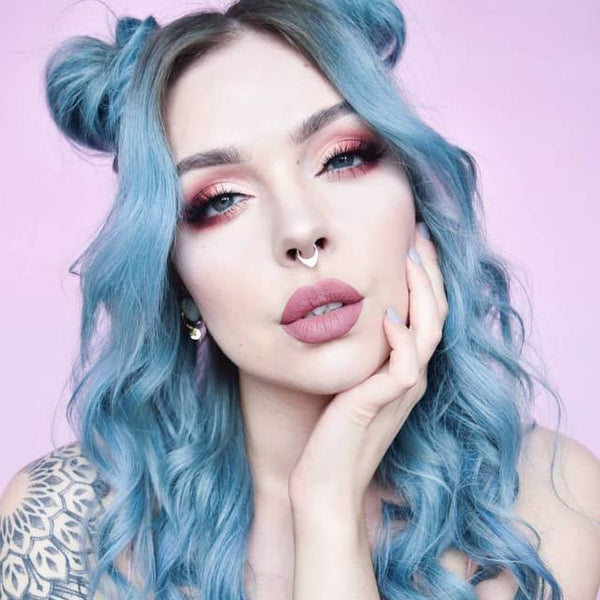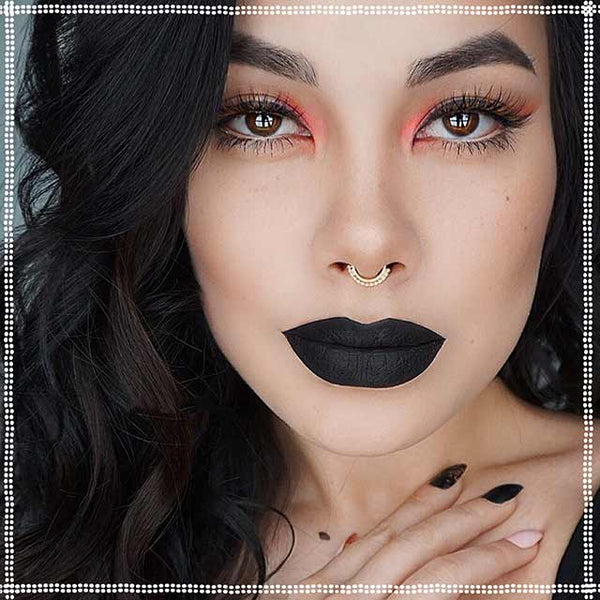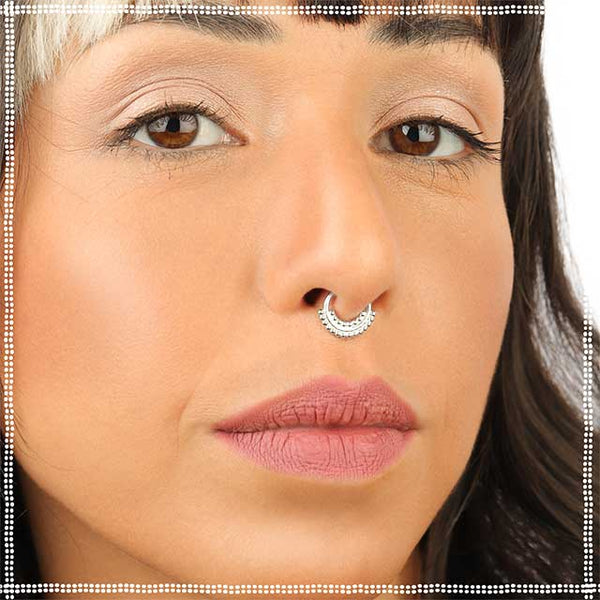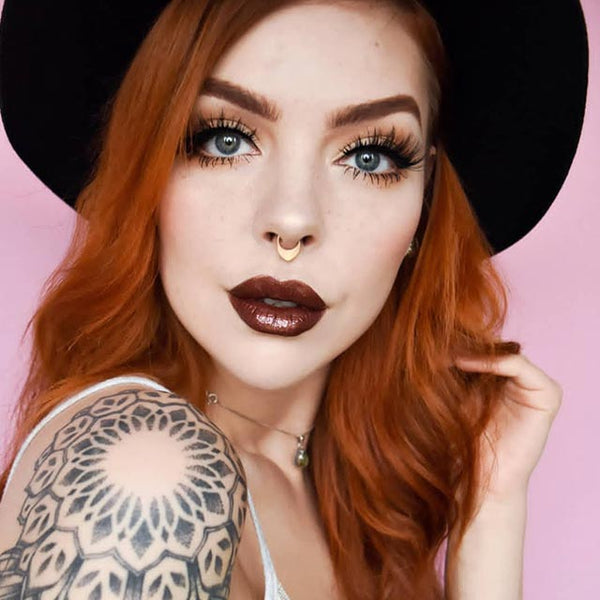Piercing Bumps, Keloids, and Infection: How to Avoid and Treat Them!
Silver Septum Jewelry | Neptune's Child

Most of the time, we get our various piercings, and the end result is utterly flawless. We have no serious residual pain or soreness, the healing process goes smoothly, and all we ever know of infections and complications is from the horror stories we hear through the grapevine or read on blogs online. However, on occasion, those horror stories become nightmarish reality for us and our piercings (after all, they must happen to SOMEONE, or there wouldn’t be stories for US to read, would there?)!
If things like keloids and/or infections have never been a problem for you, you are very fortunate! We have a few tips for continued prevention of such issues in this piece for all you lucky ducks. For those of us who have experienced these things, or struggle with them right now, keep reading! We have some information that we believe will come in very handy for you, as well!
Model -Black queen @obsidiankerttu
Septum Ring - Indian Mystique
Model On Cover - Gorgeous pixie Amelie Axelson @amelieaxelson
Septum Ring - Tribal Beauty - 14 k Solid Rose Gold
And, nop. Both of them don't have any bumps or keloids issues, they are simply, well, stunning!
Piercing Bumps and Keloids
Piercing bumps develop from either pockets of pus (pustules) or skin lesions (granulomas) that most commonly occur six weeks after getting a piercing. Keloids are perhaps the most painful of the three piercing bump issues (depending on the size and amount of pressure caused by the other two, of course) because they develop from scar tissue, which is thicker and more difficult to soothe than fresh, uninjured skin.
There are a number of ways and reasons these bumps occur. It even happens, on occasion, that a person is inherently susceptible to these piercing issues (especially keloids), and therefore could have done little or nothing to prevent them. However, sometimes they develop because of improper piercing equipment, unsanitary conditions or tools in the piercing area or used to do the piercing, or bacteria in or around the piercing site just before the piercing took place, just to name a few.
Infection (Just a Refresher!)
Speaking of bacteria, we all know what an infection is. However, just as a refresher course, infection occurs whenever bacteria enter the piercing site, bred on the surface of the skin before getting the piercing, or foreign materials (I.e.: fibers from clothes, cigarette ash, pet hair, etc.) gets into, or too close to, piercings and agitates them.
Model - Super talented shape shifter @kikavonmacabre
Septum Ring - Neptune's Child - Solid 14 K Gold
Also Kika has no bump situation, only stunning, badass looks!
Avoiding the Issues
Obviously, the best forms of prevention begin with ensuring that all equipment and jewelry is one hundred percent clean, sterile, and, in the case of the jewelry, brand new (not something you borrowed from a friend or sibling and doused in alcohol at home!). Also, be sure to clean the intended piercing site well before you leave for the shop, as well as a wide circumference of the area around the area. Yes, your artist/professional will do this when they get you in their chair, but you can never be too clean when it comes to putting holes or ink in your body!
The next prevention step involves keeping your piercings clean AFTER you get them, even once they’re considered healed and they’re no longer sore or irritated. This is very important, because it is our body’s job to treat holes in our flesh as wounds, because… well, essentially, they are. Therefore, our body spends much of its time looking for ways, reasons, and excuses to close up those piercings, and some of those ways include (you guessed it!) bumps, keloids and infections! A vigilant disinfecting routine and keeping half an eye on our piercings, even years after we’ve gotten them, goes a long way toward preventing these troubling issues.
Know your allergies! One of the fastest ways to wind up with painful pus pockets is to put a material to which you are allergic or intolerant into your body. As we mentioned, your body is already trying to close up any piercings like it would wounds, so putting a piece of jewelry to which you are allergic only exacerbates the situation. If you have other piercings, make a note of which jewelry materials you could wear without difficulty, and jot down any that irritated you in any way, even if it was just a little itchy. Itching or pain, no matter how mild, could indicate an intolerance to certain materials and, while they aren’t as bad as infections, they are still not pleasant, and could lead to bumps and keloids.
Model - Beautiful Andukae
Septum Ring - Naughty Bites
Andukae is free of bump situation. It's her beauty that made me put her picture here.
Treating the Problems if They Occur
Our advice on treating bumps and keloids is to visit your piercing specialist ASAP! We know there are many different remedies and suggestions online, but these issues can quickly cause permanent damage and, in severe case, could result in you losing a large portion of the flesh in and/or around the piercing site! So, if you suspect you have even the smallest bump or pus deposit behind any of your piercings, it never hurts to double check with your specialist. Remember, having questions or concerns is NOT doubting your artist’s abilities or cleanliness, but it CAN save you from a painful lancing at an ER (which happens quite often with severe pustules), or a surgery involving removing the scar tissue and enough healthy tissue around it to be certain that no more granulomas or keloids develop on the site!
Bumps in the Piercing?
Do you have a story to share with us about you, or someone you know, and bumps, keloids and/or infections? Please reach out and let us know!

